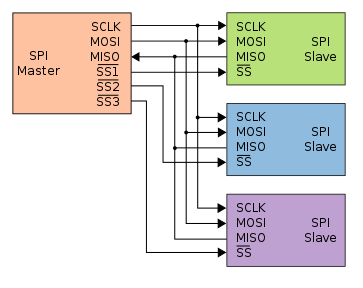I need to connect 3 devices with SPI in a daisy chain configuration.1 master 2 slaves.
the first slave is typically connected to the master:
SCK-SCK
MOSI-MOSI
CS-CS
The second slave on chain have no MOSI input, only SCK,MISO and CS.
I can connect this slave device to the master (MISO) but I interrupt the chain beetween the two slaves.
 The three device are:
- Master: ATmega32 (MCU) http://www.atmel.com/images/doc2503.pdf
- Slave 1: MCP23S17 (differential ADC)
- Slave 2: LTC1285 (3V 12-bit A/D Converter) http://www.farnell.com/datasheets/1575635.pdf
The three device are:
- Master: ATmega32 (MCU) http://www.atmel.com/images/doc2503.pdf
- Slave 1: MCP23S17 (differential ADC)
- Slave 2: LTC1285 (3V 12-bit A/D Converter) http://www.farnell.com/datasheets/1575635.pdf
Is it possible to connect theese 3 devices in a daisy chain configuration? Thanks for your help!

